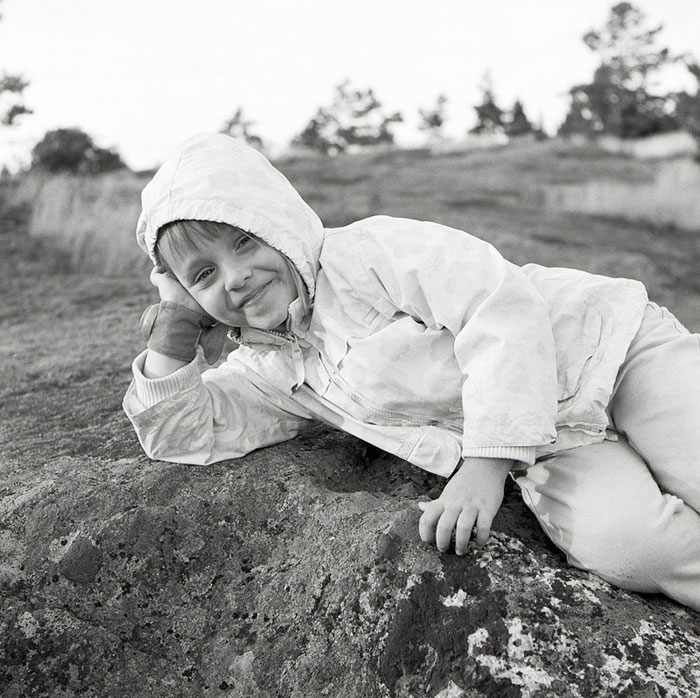At any given aperture for any given lens length you have shallower depth of field but the same angle of view in MF. So an 80mm lens covering 6x6 in MF is about the equivalent of a 44mm lens in 35mm but shallower depth of field.
So this often gives you, IMO, a more interesting/dramatic spacial relationship between OoF and in-focus picture elements.
I would give Paddy a blue ribbon for this explanation. I've been researching this for a while now, and the key is in the above sentence.
We all know that if a sharp, in-focus subject is rendered against a non-focused background, we get the "pop-out" effect. A small sensor/film can do that to some extent aided by large apertures. Bob's Summilux example above is a good illustration of this.
But notice in large format photos, there are an additional "layer" between the sharp, in-focus subject and the blurred background. I call this the in-between objects. These objects are located (spatially inside the photo) behind the subject but not quite far enough to be part of the background.
In smaller format, you can't tell these objects apart from either the subject in front, or the background. Why? because the details recorded are not enough to supply our brain with information to construct the necessary depth perception. Which by the way, is heightened by *gradual* rendering of out-of-focus areas.
Larger format excels at rendering these in-between objects due to their higher detail, smoother tone gradation, and wider POV. But again, the key is that these objects has to be rendered with less sharpness than the subject in front.
Allow me:
In this photo (a scan of a 6x7 negative frame):
gas pump = sharp, in-focus subject
left back wall with the plank leaning on it = in-between object (notice how much detail it has, yet not sharp)
trees = background
The result is as though we are standing right in front of the subject.
NOTE: This is why stitched DSLR shots could also have the same effect, because you are now capturing way more details *and* scene area than just a single frame.




